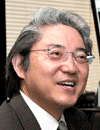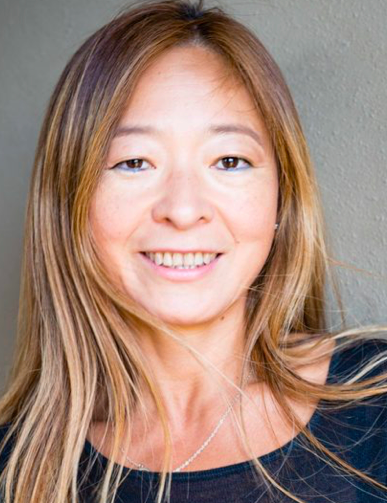Co-Located Conference Agendas3D-Bioprinting, Biofabrication, Organoids & Organs-on-Chips Asia 2022 | Flow Chemistry Asia 2022 | Lab-on-a-Chip and Microfluidics Asia 2022 | 

Thursday, 6 October 202208:00 | Conference Registration, Materials Pick-Up, Morning Coffee and Tea | |
Session Title: Conference Opening Session -- Lab-on-a-Chip and Microfluidics Asia 2022 |
| | |
Conference Chairperson: Dr. Claudia Gärtner, CEO, microfluidic ChipShop GmbH |
| | 09:00 |  | Keynote Presentation Nanobiodevices, Quantum Technology, and AI for Future Healthcare
Yoshinobu Baba, Professor, Nagoya University, Japan
We have developed nanobiodevices, quantum technology, and AI for biomedical applications and healthcare, including single cancer cell diagnosis for cancer metastasis, circulating tumor cell (CTC) detection by microfluidic devices, nanopillar devices for ultrafast analysis of genomic DNA and microRNA, nanopore devices for single DNA and microRNA sequencing, nanowire devices for exosome analysis, single-molecular epigenetic analysis, AI-powered nano-IoT sensors, quantum switching intra vital imaging of iPS cells and stem cells, and quantum technology-based cancer theranostics. Immuno-wall microfluidic devices realized the fast and low invasive “from blood to analysis” type biomarker detection of cancer with fM detection sensitivity within 2 min. Additionally, nanopillar nanofluidic devices give us ultrafast separation of DNA and microRNA within 60 µs and nanopillar-nanopore integrated nanobiodevice enables us ultrafast single molecular DNA sequencing. Nanowire devices are extremely useful to isolate extracellular vesicles from body fluids and vesicle-encapsulated microRNA analysis. The device composed of a microfluidic substrate with anchored nanowires gives us highly efficient collections of extracellular vesicles in body fluids and in situ extraction for huge numbers of miRNAs (2,500 types) more than the conventional ultracentrifugation method. Nanowire devices gave us the miRNA date for several hundred patients and machine learning system based on these miRNA data enabled us to develop the early-stage diagnosis for lung cancer, brain tumor, pancreas cancer, liver cancer, bladder cancer, prostate cancer, diabetes, heart diseases, and Parkinson disease. Nanowire-nanopore devices combined with AI (machine learning technique) enable us to develop mobile sensors for SARA-CoV-2, PM2.5, bacteria, and virus in the environment. Quantum dots and nanodiamonds with nitrogen-vacancy centers are applied to develop quantum-biodevices for single cancer cell diagnosis, single molecular epigenetic analysis, quantum switching intra vital imaging for iPS cell (induced pluripotent stem cells) based regenerative medicine, and quantum photo immuno-therapeutic devices for cancer. |
| 09:30 |  | Keynote Presentation The NIH Microphysiological Systems Program: Tissue Chips for Tools for Drug Development and Precision Medicine
Danilo Tagle, Director, Office of Special Initiatives, National Center for Advancing Translational Sciences at the NIH (NCATS), United States of America
Approximately 30% of drugs have failed in human clinical trials due to adverse reactions despite promising pre-clinical studies, and another 60% fail due to lack of efficacy. A number of these failures can be attributed to poor predictability of human response from animal and 2D in vitro models currently being used in drug development. To address this challenges in drug development, the NIH Tissue Chips or Microphysiological Systems program is developing alternative innovative approaches for more predictive readouts of toxicity or efficacy of candidate drugs. Tissue chips are bioengineered 3D microfluidic platforms utilizing chip technology and human-derived cells and tissues that are intended to mimic tissue cytoarchitecture and functional units of human organs and systems. In addition toxicity studies in drug development, these microfabricated devices are also being used to model various human diseases for assessment of efficacy of candidate therapeutics. A more recent program is the development of “clinical trials on chips” to inform clinical trial design and implementation, and for studies in precision medicine. Presentation will provide a program update and future directions towards widespread use of tissue chip technologies in partnerships with various stakeholders. |
| 10:00 |  Moving Diagnosis Closer to the Patient: Smart Consumables For Novel Point-of-Care Solutions Moving Diagnosis Closer to the Patient: Smart Consumables For Novel Point-of-Care Solutions
Iris Prinz, Head of Sales and Business Development, STRATEC Consumables GmbH
Within the presentation we will focus on a Point-of-Care solution realized at STRATEC Consumables jointly with Femtonics. This Point-of-Care cartridge includes several challenges e.g. manufacturing of fluidics including opening mechanism for blisters by injection molding, content loading like dispensing and lyophilisation as well as several assembly steps in order to realize a diagnostic platform with the aim to detect respiratory diseases.
| 10:30 | Mid-Morning Coffee and Tea Break and Networking in the Exhibit Hall | 11:00 |  | Keynote Presentation Nanoplasmonic Platforms for COVID-19 Vaccine Development
Amy Shen, Professor and Provost, Okinawa Institute of Science and Technology Graduate University, Japan
The recent emerging SARS-CoV-2 variants require swift actions in identifying specific antigens and optimizing vaccine development to maximize the humoral response of the patient. Specifically, measuring the specificity and the amount of antibody produced by the host immune system with high throughput and accuracy is crucial to develop timely diagnostics and therapeutic strategies. Motivated by finding an easy-to-use and cost-effective alternative to existing serological methodologies, an optomicrofluidic sensing platform is developed to rapidly detect antibodies against the SARS-CoV-2 spike protein in diluted human plasma within 30 minutes, at the limit of detection of 0.5 pM (0.08 ng/mL). The sensing principle is based on localized surface plasmon resonance (LSPR) involving gold nanospikes (fabricated by electrodeposition) in a microfluidic device, coupled with an optical probe. Extending this work, a nanoplasmonic multiplex optical biosensor to capture the humoral response in serums against Spike from SARS-CoV-2 and two hemagglutinins (HAs) from influenza viruses is established recently. This multiplex assay demonstrates multiple serum antibody profiling by using immunized mice, validated by the ELISA. Our nanofabrication and surface patterning techniques, combined with biotin tag-based protein functionalization method, can be utilized to establish high throughput screening platform for the SARS-CoV-2 vaccine development and beyond.
|
| 11:30 |  | Keynote Presentation A Microfluidic Handheld Platform - Flexible Use With and Without Instrument
Claudia Gärtner, CEO, microfluidic ChipShop GmbH, Germany
|
| 12:00 |  | Keynote Presentation Developing Tools For Disease Diagnostics: From Cancer to COVID-19
Steve Soper, Foundation Distinguished Professor, Director, Center of BioModular Multi-Scale System for Precision Medicine, The University of Kansas, United States of America
We have been developing tools for the diagnosis of a variety of diseases. The commonality in these tools is that they consist of microfluidic devices made from plastics via injection molding. Thus, our tools can be mass produced at low-cost that facilitates bench-to-bed side transition and point-of-care testing (POCT). We have also been generating novel assays focused on using liquid biopsy samples. Recently, we have focused on developing plastic nanofluidic devices, which provides unique opportunities for single-molecule analyses. In this presentation, I will talk about the evolution of our fabrication efforts of plastic-based microfluidic and nanofluidic devices as well their surface modification to make the devices biocompatible. Then, I will discuss several applications of these devices and the assays for selection of rare liquid biopsy targets from clinical samples and molecular analysis of their contents to help guide disease management. I will use two examples to highlight the utility of these devices: (1) Analysis of circulating tumor cells (CTCs) using microfluidics for the diagnosis of pancreatic ductal adenocarcinoma (PDAC); and (2) detection of COVID-19 using POCT from saliva samples. PDAC is a deadly disease with a 5-year survival rate <5%. A microfluidic chip for CTC selection consisted of channels surface-decorated with antibodies that could select CTCs directly from whole blood and enumerate them to determine response to therapy or subject them to next generation sequencing to determine a patient’s ability to accept certain treatments. The COVID-19 diagnostic accepts saliva samples and searches for SARS-CoV-2 particles and counts the number of virus particles selected using a label-free approach; nano-Coulter Counter chip (nCC). Both steps of the assay were carried out using a microfluidic and nanofluidic device, respectively. The chips were integrated to a control board to allow for sample processing automation with results in <20 min. |
| 12:30 | Networking Lunch in the Exhibit Hall -- Visit Exhibitors and View Posters -- Japanese Bento Box Lunch | |
Session Title: Emerging Technologies and Approaches in the Microfluidics Space |
| | 13:30 | Direct Ink Writing 3D Printing for Fabricating Ultra-deformable Microfluidic Electronic Devices
Michinao Hashimoto, Associate Professor, Singapore University of Technology and Design, Singapore
Three-dimensional (3D) printing has become the new standard to fabricate
microfluidic devices. Stereolithography (SL) printing has been
increasingly used to fabricate fluidic channels, but the fabricated
devices are restricted by attainable channel dimensions and properties
of photoresins. Integration of channels with electronic components is
also difficult due to the mechanism of SL printing. In this work, we
present direct ink writing (DIW) 3D printing as an alternative route to
fabricating microchannels. DIW 3D printing allows extrusion-based
patterning of silicone-based elastomeric materials (e.g.,
room-temperature-vulcanizing (RTV) silicone and addition-curing two-part
silicone) on unique substrates such as elastomeric sheets integrated
with electronic components (e.g., light-emitting diode chips and near
field communication (NFC) tags) to enhance the functionality of the
device. To highlight the advantage of DIW-based fabrication of
microchannels, an ultra-deformable film-based microfluidic device with
embedded liquid metals is fabricated to demonstrate the device
conformability that addresses mechanical mismatch at the tissue-device
interface. Overall, DIW 3D printing offers unique opportunities for the
fabrication of microfluidic devices with advanced functions and will be
beneficial for the development of flexible sensors and actuators. | 14:00 |  | Keynote Presentation Lab on a Particle Technology to Unlock Antibody and Cell Therapy Discovery
Dino Di Carlo, Armond and Elena Hairapetian Chair in Engineering and Medicine, Professor and Vice Chair of Bioengineering, University of California-Los Angeles, United States of America
We have developed 3D-shaped hydrogel microparticle platforms to capture cells, as well as isolate and label their secretions. These “lab on a particle” systems enable sorting cells based on secreted products for the discovery of antibodies, the development of cell lines producing recombinant products, and the selection of functional cells for cell therapies. Each cell and its secreted products can be analyzed using widely available flow cytometers operating at up to a 1000 cells per second. I will discuss our latest results in sorting antigen-specific T cells and mesenchymal stem cells based on secreted cytokines, extracellular vesicles, and growth factors. Cells sorted based on these properties are intact, can regrow, and maintain the selected function over multiple population doublings, enabling cell therapy discovery and manufacturing workflows. |
| 14:30 |  | Keynote Presentation Promoting Microfluidics From the Lab to Real Biomedical Applications
An-Bang Wang, Distinguished Professor, Institute of Applied Mechanics, National Taiwan University, Taiwan
Microfluidics can bring significant advantages in various applications, e.g., chemical reaction, process control and bio-medical detection etc. In the past twenty-five years, we shifted the research topics from different microfluidic components for pure scientific interest, including micropump, microvalve, and micromixer etc., to various integration systems for potential industrial applications, e.g., microreactor / multi-emulsion generators, high-throughput fluid / flow properties analyzor, and the maskless pattern coating system by multi-phase microfluidic technology, etc. Recently, efforts were made for promoting the microfluidic applications in the life science studies and clinical diagnoses with the advantages of fast, easy use, and excellent cost performance. Examples include a sequential lab-on-a-chip control for biomedical point-of-care testing, and an extremely material- and time-saving TDC (Thin-film Direct Coating) microfluidic platform for fast immunoassay and detection, including the fast TDC WB (western blotting) for fast evaluation of neutralizing response to SARS-CoV-2 and fast TDC IHC (Immunohistochemistry).
|
| 15:00 |  PµSL, An Ultra-Precise 3D Printing, and its Application in Microfluidics PµSL, An Ultra-Precise 3D Printing, and its Application in Microfluidics
June Lu, Senior Engineer, BMF Asia
3D printing has been rapidly developed and well accepted in academic researches and different industries. However, obvious drawbacks of current 3D printing technologies still inhibit their further application and hence commercialization. Among them, resolution is one of the most mentioned concerns. Projection Micro Stereolithography technology (PµSL), with ground-breaking 2µm/10µm resolution, has been increasingly applied in both scientific researches and new product development. Compared to traditional methods such as injection molding and machining, PµSL substantially reduces the cost and shorten the lead time, by avoiding the mold fabrication or complicated programming. Compared to lithography, PµSL can avoid complex casting and strenuous assembly procedures, and able to build parts with more complex 3D structures as well (e.g., internal channels). Furthermore, PµSL can help to break the fetters of mind which inhibit the imagination of engineers. They can now reconsider the designs which were believed to be impossible with other methods. This report describes the principle and advantages of PµSL, then provides some case studies of its applications in microfluidics.
| 15:30 |  3D Bioprinting by “Watercolor” 3D Bioprinting by “Watercolor”
Nelson Khoo, Chief Business Development & Sales Officer, Fluicell AB
Today, iPSC, stem cells, gene editing and bioprinting hold a scientist’s focus to improve research results, use better surrogate models to mimic in situ organs and, improve quality of life for patients. Many of the tools now available have made it possible to create such models, to replicate a tissue surrogate i.e., respiratory epithelium, liver models, pancreatic mini-organoids, etc. Fluicell AB is a 3D bioprinting company that provides the unique capability to deliver solutions and cells into a cell culture with high precision, without having diffusion or requiring a typical bioink. This gives pharma and biotech, as well as innovative research questions in world renown institutes, the opportunity to make and study heterogenic and biological relevant models, spheroids or mini-organoids. Our Biopixlar™ bioprinter is a novel platform that take advantage of a microfluidic based printhead to carefully deliver solutions and cells of interest according to requirements – offering you a “Lab in a Tip.” Representative examples will be shown to illustrate our take on bioprinting.
| 16:00 | Mid-Afternoon Coffee and Tea Break and Networking in the Exhibit Hall | |
Session Title: Innovations in Cell Therapy 2022 |
| | 16:30 | Healios’ eNK Cells: Research, Development and Manufacturing of an Innovative Treatment for Solid Tumors
Hardy TS Kagimoto, Founder, Chairman and CEO, HEALIOS K.K., Japan
HEALIOS K.K. (“Healios”) has developed engineered NK cells (“eNK” cells), a novel gene-edited NK cell therapy designed to possess excellent efficacy for solid tumors. Healios’ eNK cells are produced from a proprietary iPSC line, which has been genetically modified for enhanced anti-tumor activity. The eNK cell platform is uniquely differentiated from other approaches, having been engineered with five enhancements that are important for cancer killing activity. This comprehensive set of functional enhancements - and in particular unique migratory and immune cell recruitment features – position Healios’ eNK cells with the potential to penetrate solid tumors and, once there, initiate robust tumor killing activity. Preclinical studies have demonstrated superior antitumor activity of eNK cells in comparison to unmodified iPSC-derived and peripheral blood NK cells in vitro and in vivo. In addition, eNK cells have been generated in a high quality, clinical grade form and are currently manufactured in Healios’ in-house GMP facility at the Kobe Center for Medical Innovation utilizing a proprietary, automated, feeder-cell free 3D perfusion bioreactor system at an efficient scale of 100 billion cells per batch. Healios is continuing with its testing of eNK cells both in its laboratory facilities in Kobe as well as through joint research with several academic institutions. Healios has begun pre-clinical consultations with the PMDA and aims to begin clinical trials using eNK cells in 2024. | 17:00 | Oncolytic Vaccinia Vectors for Cancer Immunotherapy
Takafumi Nakamura, Associate Professor, Division of Molecular Medicine, Tottori University, Japan
Vaccinia virus, once widely used for smallpox vaccine, has been genetically engineered and used as an oncolytic virus for cancer virotherapy. The therapeutic index is successfully enhanced by stricter tumor-specific viral replication, stronger oncolytic potency, and optimized induction of antitumor immunity. Two viral proteins VGF and O1 contribute to viral replication and spread by activation of EGFR-dependent MAPK/ERK pathway. VGF- and O1-deleted vaccinia virus (MDRVV) inhibited pathogenic viral replication in normal cells without impairing therapeutic replication in tumor cells. Recently, fusogenic vaccinia virus (FUVAC) was discovered during plaque purification of the MDRVV. FUVAC has a nonsense mutation in the viral gene K2L, whereas other viral genomes are maintained in the MDRVV. Using a bilaterally tumor-bearing syngeneic mouse model, unilateral administration of FUVAC more efficiently enhanced CD8+ T cell infiltration and inhibited tumor growth in not only treated tumors but also untreated tumors than MDRVV. Interestingly, FUVAC reduced tumor-associated immune suppressive cells such as regulatory T cells, myeloid-derived suppressor cells and tumor-associated macrophages in the injected tumor. In accordance with the change for the better, the anticancer effects of FUVAC in both injected and non-injected tumors were completely suppressed by depletion of CD8+ T cells. Taken together, fusogenic vaccinia virus exerts more potent antitumor immune responses by modulating the tumor microenvironment than non-fusogenic vaccinia virus. Furthermore, the simultaneous expression of immune-modulating genes in FUVAC augmented the antitumor activity via inducing potent and durable antitumor immune responses following viral oncolysis. The combined properties have the potential to overcome oncolytic virus-resistant tumors which limit the clinical benefits due to tumor heterogeneity and the complexity of tumor microenvironment. Thus, FUVAC would be better therapeutic platform as a next-generation oncolytic vaccinia vector. | 17:30 | CRISPR/Cas9 Gene Editing of MIR155HG in Primary Human T Cells to Prevent Acute Graft-versus-Host Disease
Ramiro Garzon, Professor, The Ohio State University, United States of America
Acute graft-versus-host disease (aGVHD) is the primary cause of non-relapse mortality in patients receiving an allogeneic hematopoietic cell transplant. Previously we showed miR-155 is necessary for development of aGVHD. Thus, there is an unmet need to target miR-155 using different strategies. To overcome this problem, we propose to delete miR-155 host gene (HG) in primary T cells from human donors using CRISPR/Cas9 genome editing. We identified three pairs of guideRNAs targeting the promoter or exon 3 (Ex3) of MIR155HG, all of which exhibited expected deletion sizes confirmed by genomic PCR and significantly reduced expression of mature miR-155 transcript relative to non-targeting control guide. Digital droplet PCR and whole genome sequencing followed by CHURCHILL genome analysis was used to identify on and off target effects. To assess in vivo function, we performed xenogeneic aGVHD transplants using MIR155HG edited or control T cells injected into NSG mice. Recipients of MIR155HG deleted T cells displayed significantly lower aGVHD clinical scores (p<0.01) and significantly improved survival compared to mice receiving control T cells. In summary, our studies support the development of genome editing of MIR155HG in primary human T cells as a strategy to prevent aGVHD. | 18:00 | Ghost Cytometry for Diagnostic, Cell Therapy, and Pooled Screening, and Beyond
Sadao Ota, Associate Professor, University of Tokyo, Japan
Our groups focus on the development of high-speed, pooled, and multimodal measurement systems such as droplet microfluidics and flow cytometry by integrating hardware, biological, chemical, and information technologies to extract valuable information from cells or utilize functional cells for biomedical purposes. In this talk, I will first introduce a high-speed cell analysis and sorting technology developed based on an AI-driven approach for analyzing cellular image information without creating images (GC: ghost cytometry). We have realized GC-based cell sorters in both fluorescent and unlabeled (refractive index distribution information) versions and are developing practical applications for diagnostic, cell therapy, and screening applications. An increasing variety of machine learning methods of both supervised and unsupervised learning approaches adds flexibility to the analysis. As time permits, I would also like to introduce the concept of networked cell analysis platforms and realized technologies that we have recently developed, including a fast three-dimensional imaging flow cytometer. | 18:30 | Japanese Beer and Sake Reception in the Exhibit Hall -- Network with Colleagues and Engage with Exhibitors and Poster Presenters |
Friday, 7 October 2022 |
Please Refer to the Bioprinting/Organoids/Organ-on-a-Chip Asia 2022 Track Agenda for Details of Programming on Friday, 07 October 2022 |
| |
|


 Add to Calendar ▼2022-10-06 00:00:002022-10-07 00:00:00Europe/LondonLab-on-a-Chip and Microfluidics Asia 2022Lab-on-a-Chip and Microfluidics Asia 2022 in Tokyo, JapanTokyo, JapanSELECTBIOenquiries@selectbiosciences.com
Add to Calendar ▼2022-10-06 00:00:002022-10-07 00:00:00Europe/LondonLab-on-a-Chip and Microfluidics Asia 2022Lab-on-a-Chip and Microfluidics Asia 2022 in Tokyo, JapanTokyo, JapanSELECTBIOenquiries@selectbiosciences.com